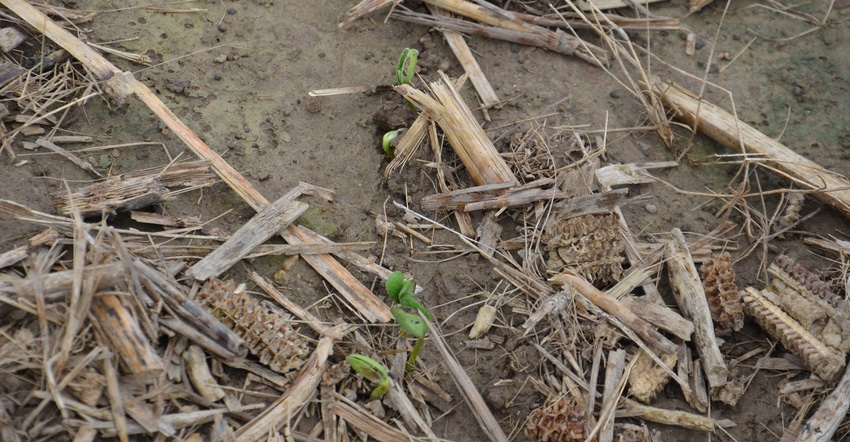April 27, 2020

How do I determine if my soybeans would respond to sulfur? If I’ve already planted, can I still apply it? How should I apply?
The Indiana certified crop advisers panel answering this question includes Betsy Bower, agronomist with Ceres Solutions, Terre Haute; Jesse Grogan, regional manager at AgReliant Genetics LLC, Lafayette; and Stan Miles, agronomist with A&L Great Lakes Laboratories, Fort Wayne.
Bower: Shaun Casteel at Purdue University found sandy or low-organic-matter silt loams can respond to sulfur. Gauge response by applying strips of sulfur. Apply granular AMS, not spray-grade AMS. If you’ve already applied preplant fertilizer, spread 100 pounds per acre of AMS in two or three strips. Mark strips and check yield.
You could also apply a liquid like ammonium thiosulfate. Apply enough to get around 7 to 11 pounds of immediately available sulfur. If mixing with preplant soil residual herbicides, do a jar test first.
Casteel suggests the operative need is 10 pounds per acre of actual sulfur, preferably immediately available early in the season. The most consistent response is when sulfur is applied two weeks before to two to three weeks after planting.
If you’ve already planted, take a tissue test to determine need. If needed, apply AMS, K-Mag plus urea, or Sul4R-Plus to provide at least 10 pounds of actual sulfur per acre.
Most foliar sulfur products don’t pack a big punch of sulfur. Foliar applications of ATS would significantly burn leaf tissue. More slowly available forms include gypsum and 90% S. Gypsum needs rainfall to release sulfur. The S in 90% S isn’t plant-available and requires microbes and soil temperatures of 75 degrees F or above. Apply in the fall.
Grogan: Soybeans are more likely to respond in deficient soils, usually low-organic-matter soils such as coarse sands or tight clays. Sulfur deficiencies also occur in cool, early-season weather and poorly drained fields. A standard soil testing program would determine sulfur needs.
Preplant ammonium sulfate at 24 pounds of actual sulfur in early spring has been effective for some. Preplant liquid products are available for fertigation or sidedress. Correction of sulfur deficiency requires higher rates of sulfur than usually found in liquid postemergence products.
Sulfur applied after planting in the V4 to R3 growth stage can be a benefit. Application rates of 1 to 2 quarts per acre usually contain 0.5 pound sulfur per acre or less. This level has some effect as a rescue but isn’t as productive as preplant applications.
Miles: A 70-bushel-per-acre soybean crop needs about 25 to 30 pounds of sulfur. It’s taken up as sulfate, and any fertilizers that are added should be in the sulfate form to be utilized by the current crop. Other forms may be used but will likely benefit subsequent crop years, not current crop needs.
Very little sulfur today is received through atmospheric deposition. Crop requirements must be met by decomposition of soil organic matter and application of sulfur. Ammonium sulfate has become a popular fertilizer source in soybeans, but other choices are available.
Common rates would likely fall in the range of 15 to 20 pounds per acre, with a targeted application window of two weeks prior to planting through the R1 growth stage.
Work done by Shaun Casteel at Purdue suggests that early-planted soybeans in fields with lower levels of soil organic matter may offer the highest likelihood of a sulfur fertilizer response.
You May Also Like




